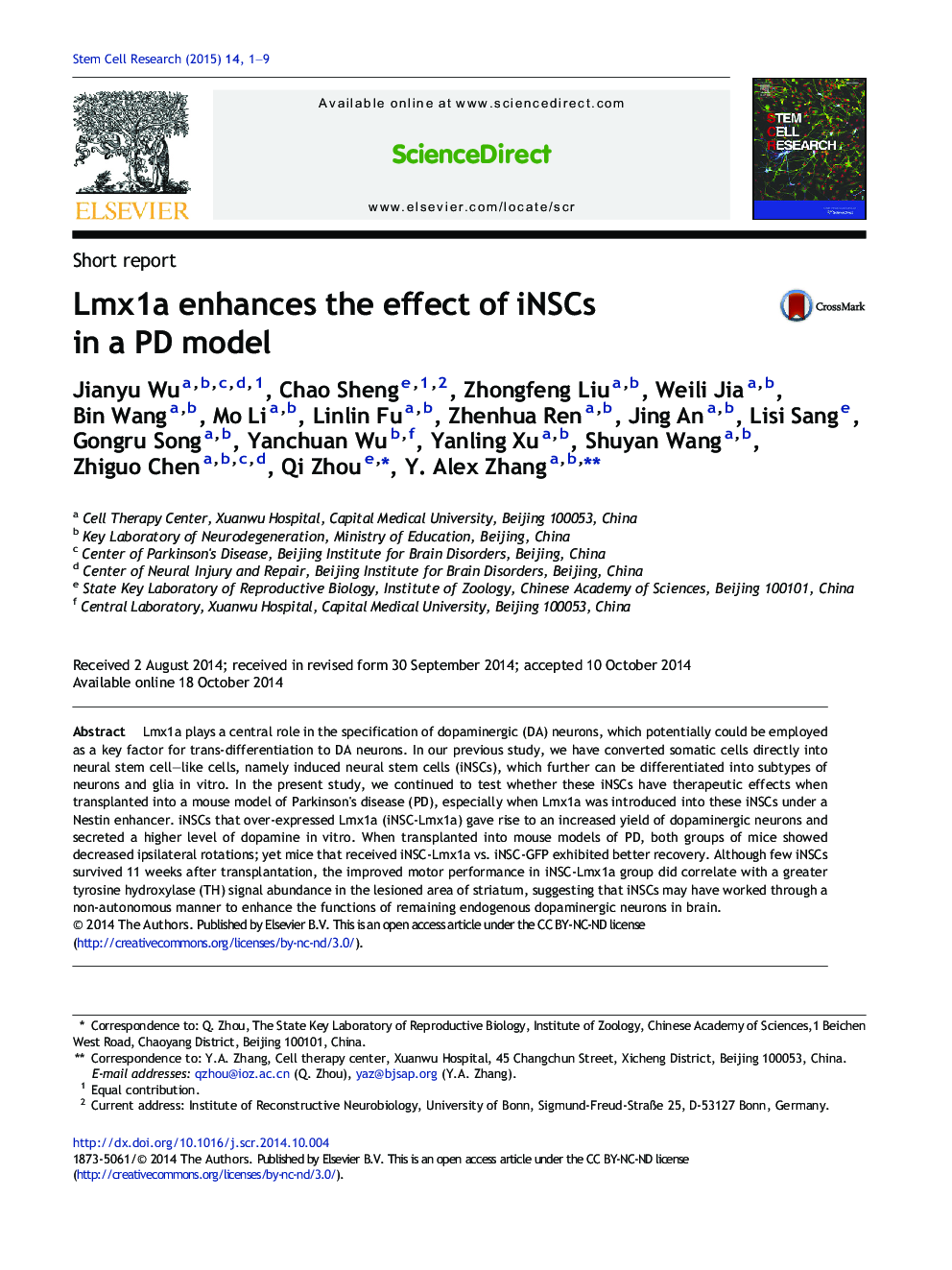| Article ID | Journal | Published Year | Pages | File Type |
|---|---|---|---|---|
| 2094234 | Stem Cell Research | 2015 | 9 Pages |
•Lmx1a promotes DA neuron specification and dopamine production from iNSCs.•iNSC-Lmx1a vs. iNSC-GFP shows better therapeutic effects in a PD mouse model.•iNSCs may have worked in a cell non-autonomous manner for PD treatment.
Lmx1a plays a central role in the specification of dopaminergic (DA) neurons, which potentially could be employed as a key factor for trans-differentiation to DA neurons. In our previous study, we have converted somatic cells directly into neural stem cell—like cells, namely induced neural stem cells (iNSCs), which further can be differentiated into subtypes of neurons and glia in vitro. In the present study, we continued to test whether these iNSCs have therapeutic effects when transplanted into a mouse model of Parkinson's disease (PD), especially when Lmx1a was introduced into these iNSCs under a Nestin enhancer. iNSCs that over-expressed Lmx1a (iNSC-Lmx1a) gave rise to an increased yield of dopaminergic neurons and secreted a higher level of dopamine in vitro. When transplanted into mouse models of PD, both groups of mice showed decreased ipsilateral rotations; yet mice that received iNSC-Lmx1a vs. iNSC-GFP exhibited better recovery. Although few iNSCs survived 11 weeks after transplantation, the improved motor performance in iNSC-Lmx1a group did correlate with a greater tyrosine hydroxylase (TH) signal abundance in the lesioned area of striatum, suggesting that iNSCs may have worked through a non-autonomous manner to enhance the functions of remaining endogenous dopaminergic neurons in brain.
